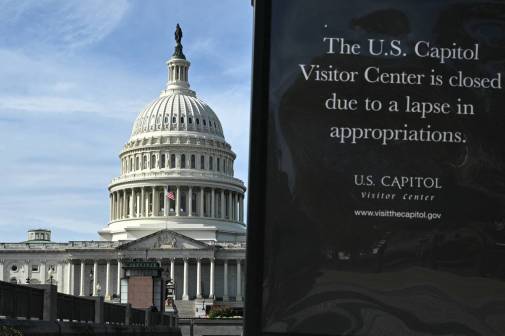State and local governments plead again as federal pandemic relief stalls

State and local government leaders this week kept pleading for Congress to include significant funding to help them survive the costs of the COVID-19 pandemic, but to little avail as negotiations between House Democrats, Senate Republicans and the White House appear to have come to a standstill.
Without a rescue package, the officials said, states, cities and counties face a financial abyss that will force more furloughs and layoffs, cuts to vital services and delays to critical IT and cybersecurity investments. On a conference call Friday, a group of county leaders from New York State, joined by members of Congress, said that more than halfway into their current fiscal years, it’s the “last call” to prevent local governments from falling off the cliff.
“Tough decisions are going to be made,” Albany County Executive Dan McCoy said during the call.
Stephen J. Acquario, the executive director of the New York State Association of Counties, said local governments have been hit by an “economic quadruple threat” between drops in sales-tax revenue, near-complete loss of hotel occupancy taxes, higher spending and mandatory reimbursements to the state government for services like Medicaid.
The National Association of Counties has estimated that its members face budget shortfalls totaling $202 billion, as the health crisis has eaten into tax revenues while also drastically increasing spending on emergency health measures and digital government services.
Meanwhile, more than 1.1 million public-sector workers have lost their jobs since February, according to figures published Friday by the U.S. Bureau of Labor Statistics. Nearly half —515,000 — have been in city governments, according to the National League of Cities.
“Small cities and towns across America were left behind through the CARES Act, and our communities simply cannot afford to be left behind by Congress again,” the group’s executive director, Clarence E. Anthony, said in a press release. “Local governments have hemorrhaged jobs, with a third of cities already beginning to furlough or lay off essential municipal workers while nearly half are planning to institute hiring freezes. The long-term costs and the economic damage will be even greater in the long run if we fail to act now and support a comprehensive unemployment package that includes direct aid to municipalities in order to stop the bleeding.”
The relief package President Donald Trump signed in March included $150 billion for states and some large cities, but limited that money to being used only for pandemic-related costs. Now, state and local governments say that not only is much more needed, but that any additional money be fully flexible to cover budget shortfalls going forward.
The National Governors Association has repeatedly asked the federal government for $500 billion in support to state government, a call New York Gov. Andrew Cuomo repeated this week when he became the group’s new chairman.
“The NGA is united in telling our Washington colleagues that they must include $500 billion in unrestricted state funding in the upcoming COVID response legislation,” Cuomo said Wednesday.
A $3 trillion package the House passed in May included $915 billion in unrestricted aid for state, local, tribal and territorial governments, but so far the Senate has not offered any new money.
While state and local governments are now pressing Congress for funds that can be used across their organizations, some groups earlier this year said that any additional aid package include dedicated IT and cybersecurity funds to support digital government services and protect remote workforces. Last month, the National Association of State Chief Information Officers sent Senate leaders a letter reminding them of those needs.
“State IT agencies, led by state CIOs, have rapidly invested in significant IT infrastructure to support the drastic increase in technological and security demands, but additional resources are clearly needed as the impact of COVID-19 is likely to last for years to come,” the letter read.
Reached for comment this week, NASCIO said it did not have anything to add to the letter.
But NGA press secretary James Nash told StateScoop that without a rescue, states will be forced to make crippling reductions in order to survive.
“Losing 5 percent to 20 percent of their revenue while taking on higher costs for health care, emergency response and workforce assistance puts states in an untenable position,” Nash said. “States need to balance their budgets, and without much-needed federal assistance, the cuts needed to achieve that balance will fall on the backs of all Americans.”






